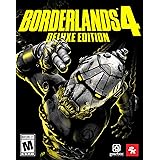Mastering the Portable FPS: A Deep Dive into Sony PSP First-Person Shooters
The Sony PlayStation Portable (PSP) stands as a monumental achievement in handheld gaming, lauded for its robust library and impressive graphical capabilities for its era. However, a significant design constraint plagued many genres, particularly first-person shooters: the absence of a second analog stick. This singular omission presented a formidable challenge for developers aiming to translate the fluid aiming and movement expected from the FPS experience to a portable format. Despite these hardware limitations, a surprising number of studios rose to the occasion, meticulously crafting inventive control schemes and optimizing gameplay to deliver engaging first-person shooter experiences on the PSP.
As highlighted in the accompanying video by Metal Jesus, the ingenuity of these developers ensured that the PSP did not miss out on the FPS action. Many titles found clever ways to adapt, often utilizing the face buttons for camera control or implementing robust auto-aim and lock-on mechanics. This article delves deeper into the landscape of PSP first-person shooters, exploring the design philosophies behind these adaptations and evaluating the lasting impact of these ambitious handheld ports.
Coded Arms & Coded Arms: Contagion – Pioneering Portable FPS Action
Konami’s Coded Arms marked an early, ambitious attempt at a dedicated first-person shooter for the PSP, arriving as an exclusive title that genuinely excited early adopters. Its virtual reality, matrix-like setting offered a compelling backdrop for arena-style combat. While the original game felt somewhat constrained by its repetitive level design, often trapping players in rooms until all enemies were eliminated, it established a foundational framework for future handheld FPS development.
The sequel, Coded Arms: Contagion, significantly refined this formula, enhancing virtually every aspect of its predecessor. Developers focused on creating more dynamic and explorable environments, integrating verticality and intricate layouts that felt reminiscent of contemporary console FPS titles. Although this visual complexity occasionally led to noticeable frame rate drops, the inclusion of a highly effective lock-on feature and diverse weapon arsenal made combat surprisingly fluid and enjoyable. The innovative ability to strip away textures, revealing enemy positions like a digital x-ray, also added a unique tactical layer. For enthusiasts exploring the PSP’s FPS library, Coded Arms: Contagion remains the definitive choice, showcasing how a developer can overcome hardware limitations through clever design.
Call of Duty: Roads to Victory – World War II Action on the Go
Treyarch brought the blockbuster Call of Duty franchise to the PSP with Call of Duty: Roads to Victory, delivering a surprisingly comprehensive World War II experience. This portable adaptation, mirroring elements from Call of Duty 3, presented players with an expansive single-player campaign comprising 14 distinct missions spread across three diverse theaters of war. The game meticulously recreated the chaotic, cinematic atmosphere synonymous with the series, immersing players in large-scale battles where explosions and gunfire constantly filled the screen.
One of its most praised features was the classic Call of Duty auto-aim, a design choice that, while not striving for realism, significantly enhanced playability on the PSP’s limited controls. Players could swiftly snap to targets, maintaining the fast-paced action the series is known for. The development team also optimized the game for the PSP’s UMD format, resulting in remarkably quick load times between missions and seamless auto-saves, minimizing disruptions to the intense gameplay. Despite not being the most graphically advanced title, Roads to Victory consistently prioritized gameplay excellence, establishing itself as a fan-favorite first-person shooter on the platform.
Ghost in the Shell: Stand Alone Complex – Tactical Anime Combat
Based on the iconic anime, Ghost in the Shell: Stand Alone Complex offered a distinctive tactical FPS experience on the PSP. Its North American release delighted fans of the cyberpunk franchise, bringing the intricate world of Section 9 to a handheld format. The game ingeniously incorporated the series’ beloved Tachikoma autonomous tanks as combat companions. These AI-driven units not only provided humorous dialogue but also served as powerful, customizable allies that could be commanded to engage enemies strategically.
This tactical layer differentiated Ghost in the Shell from other shooters, allowing players to coordinate attacks and leverage their Tachikoma’s destructive capabilities. However, the game was not without its drawbacks. Frequent and disruptive load times often fragmented the action, pulling players out of the immersion. Despite this optimization challenge, the unique squad-based mechanics and faithful adaptation of the anime’s aesthetic made it a noteworthy, albeit imperfect, entry into the PSP’s FPS catalog.
Brothers in Arms: D-Day – A Narrative-Driven WWII Experience
Ubisoft’s Brothers in Arms: D-Day distinguished itself as another PSP exclusive set during World War II, notable for its surprisingly robust narrative focus. Unlike many contemporary shooters, this title placed a strong emphasis on storytelling, drawing players into the human drama of the D-Day landings. Its control scheme also diverged from the PSP norm; instead of using face buttons for camera control, character movement and camera perspective were directly linked to the analog stick, mimicking a third-person control style that some players found more intuitive for a portable device.
The game also introduced an innovative situational view, allowing players to zoom out and analyze the battlefield, plan maneuvers, and even attempt stealthy flanking routes around enemies. This strategic element, combined with decent graphics for the hardware, offered a refreshing alternative to the more linear run-and-gun titles. While some players might prefer the more direct action of Call of Duty: Roads to Victory, Brothers in Arms: D-Day presented a unique blend of narrative depth and tactical gameplay that made it a compelling addition to the PSP’s FPS library.
Peter Jackson’s King Kong: The Official Game of the Movie – Survival Horror FPS
A surprising entry into the PSP’s first-person shooter lineup was Peter Jackson’s King Kong: The Official Game of the Movie. Released on the heels of Peter Jackson’s celebrated Lord of the Rings trilogy, this movie tie-in was notable for its unique genre blend. While primarily functioning as a first-person shooter, it periodically shifted into a third-person action game where players controlled King Kong himself, engaging in epic monster battles. This dual gameplay perspective provided significant variety, contrasting the human characters’ intense survival horror segments with the raw power of the giant ape.
The human segments emphasized resource management, forcing players to conserve precious ammo and navigate the treacherous Skull Island environment while fending off prehistoric creatures. Although this PSP port was a condensed version of its console counterparts, and some found its visual presentation, particularly its pervasive darkness, to be challenging, it offered a distinctive and often intense experience. Despite showing its age in some areas, the game’s unique blend of FPS and survival horror elements, coupled with its King Kong segments, made it a fascinating, if occasionally rough, title for fans of the movie or the survival horror genre.
Star Wars Battlefront II – Epic Space Opera Conflicts
A true fan favorite, Star Wars Battlefront II brought the sprawling conflicts of the Star Wars universe to the PSP with remarkable fidelity. This portable iteration was celebrated for offering both first-person and third-person camera options, allowing players to choose their preferred combat perspective. It captured the essence of the beloved console versions, enabling players to participate in iconic battles across various planets and eras of the Star Wars saga. The sheer scale of the action and the ability to play as various classes and heroes resonated strongly with fans.
Despite occasional frame rate dips and graphics that sometimes betrayed the PSP’s hardware limitations, the sheer fun factor and immersive gameplay mechanics transcended these technical hiccups. The ability to relive classic Star Wars moments, whether as a lowly stormtrooper or a powerful Jedi Knight, contributed significantly to its enduring popularity. Star Wars Battlefront II remains a testament to how engaging gameplay can overcome technical imperfections, solidifying its status as one of the best portable FPS experiences on the PSP.
Medal of Honor Heroes & Heroes 2 – Distinguished World War II Combat
The Medal of Honor series delivered two highly-regarded exclusive titles to the PSP: Medal of Honor Heroes and its sequel, Medal of Honor Heroes 2. The first installment received critical acclaim for its polished shooting mechanics, expansive level design, and engaging mission variety. Players navigated large environments, tackling primary and secondary objectives, often with multiple paths to achieve their goals. The game’s solid performance and commendable graphics pushed the PSP’s capabilities, particularly for a title featuring numerous on-screen elements.
Medal of Honor Heroes 2, while not a PSP exclusive (also released on the Wii), further refined the formula. Interestingly, its level design was almost identical to the Wii version, showcasing a consistent vision across platforms. Improvements were noted in frame rate, providing a smoother, less choppy experience than its predecessor. The developers paid meticulous attention to the subtle but crucial aspects of FPS controls, such as responsive strafing, which significantly enhanced the overall playability, demonstrating an expert understanding of portable gaming constraints and how to skillfully mitigate them.
Tom Clancy’s Rainbow Six: Vegas – Tactical Espionage on Handheld
Tom Clancy’s Rainbow Six: Vegas brought a more realistic and tactical brand of first-person shooting to the PSP, differentiating itself from the more arcade-like experiences on the system. Reminiscent of the SOCOM series, this port demanded a methodical approach; players could not simply charge into combat without careful planning, as immediate death was often the consequence of rash actions. Success hinged on thoughtful movement, meticulous corner-peeking, and precise target acquisition to neutralize threats effectively.
While the game offered highly satisfying tactical gameplay, it did suffer from technical annoyances such as mid-game UMD loading and jarring freezes during auto-saves, which could break immersion during critical firefights. However, the inventive auto-target system, allowing players to swiftly zoom onto an enemy and then precisely snap to their head for clean headshots, offered a unique and rewarding control solution. Despite some sparse level design, likely a trade-off for performance, Rainbow Six: Vegas provided a solid and challenging tactical FPS experience, proving that even complex genre mechanics could be adapted for the portable console.
The Sony PSP’s journey with first-person shooters was defined by innovation and adaptation. Developers skillfully navigated the hardware’s inherent limitations, delivering a diverse array of captivating portable FPS experiences. These games not only pushed the boundaries of handheld gaming but also left a lasting legacy, demonstrating that with creative design, even the most challenging genres can thrive on a portable platform, showcasing why PSP first-person shooters remain an intriguing part of gaming history.









